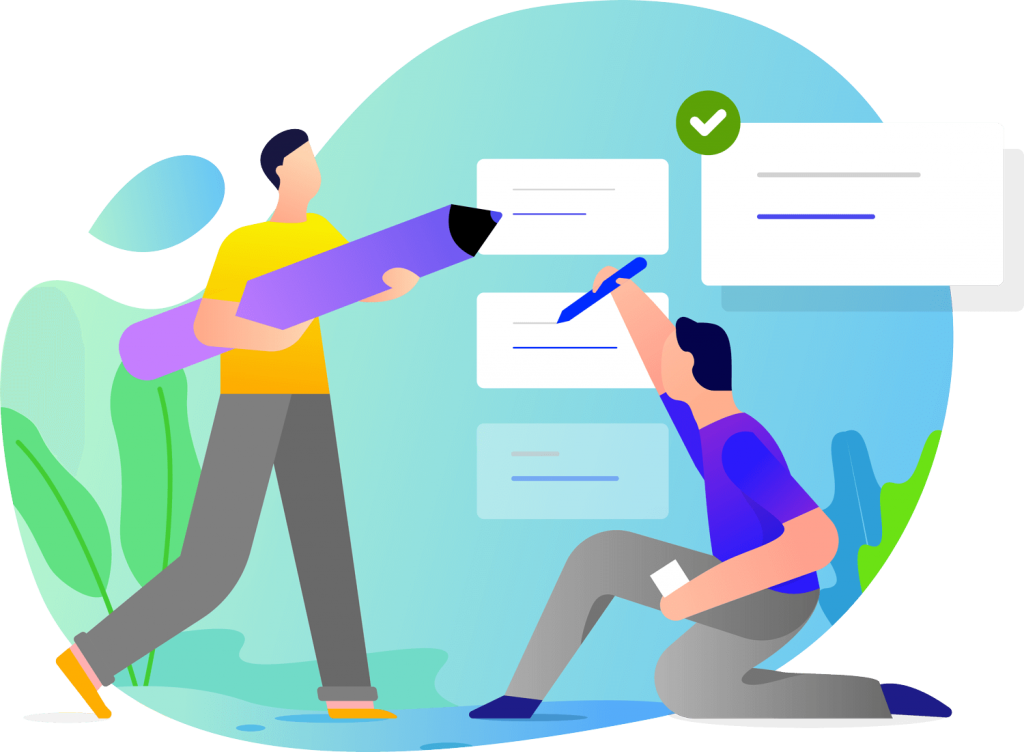In today’s digital era, an impactful website can make or break a business. But too often, even well-intentioned entrepreneurs fall into the trap of common web design blunders that hinder their conversion rates. To ensure your online presence is translating into tangible success, we have tapped into the expertise of industry professionals to bring you a comprehensive guide on sidestepping these pitfalls. From optimizing user experience to mastering visual appeal, discover the top tips that will help your business reach unprecedented conversion rates and thrive in the competitive online landscape.



Table of Contents
Toggle1. The Importance of Web Design: Enhancing Business Conversion Rates
Web design plays a crucial role in boosting business conversion rates. It is no longer enough to have an attractive website; it must also be user-friendly, responsive, and visually engaging. A well-designed website doesn’t just capture visitors’ attention, but it also provides an intuitive browsing experience.
To begin with, well-structured and visually appealing websites have the power to retain visitors for longer. People are more likely to explore a site that is aesthetically pleasing and easy to navigate. By incorporating clear headings, organized menu bars, and strategically placed call-to-action buttons, users can easily find what they are looking for, making them more likely to stay on the website and convert into customers.
Moreover, an excellent web design goes beyond mere aesthetics. A fast-loading website is essential for ensuring a positive user experience. Slow-loading pages can lead to high bounce rates, frustrating potential customers and causing them to abandon the site. By optimizing images, minimizing code, and utilizing caching techniques, web designers can significantly improve loading times and optimize conversion rates.
In conclusion, investing in professional web design is a critical step towards improving business conversion rates. A visually appealing website that provides a seamless browsing experience captures visitors’ attention and encourages them to explore further. Additionally, by optimizing loading times, potential customers are more likely to stay on the site, leading to increased conversions. In today’s digital age, where competition is fierce, prioritizing web design is paramount to stay ahead and maximize business success.
2. Common Web Design Mistakes That Can Ruin Your Conversion Rates
Web design plays a crucial role in determining the success of a website when it comes to conversion rates. However, even the most seasoned web designers can make mistakes that end up costing them valuable conversions. To avoid falling into the same pitfalls, it’s essential to be aware of these common web design mistakes:
1. Poor navigation: Nothing turns off visitors more than a confusing or cluttered navigation menu. Ensure your website’s navigation is clear, intuitive, and easy to use. Use descriptive labels and organize your menu in a logical order to help users find what they’re looking for effortlessly.
2. Slow loading times: In today’s fast-paced world, users have little patience for slow-loading websites. A slow website not only affects user experience but also impacts your conversion rates. Optimize images, minify code, and use caching techniques to improve loading times. Don’t forget to regularly test your website’s speed to identify any areas that need improvement.
3. Lack of mobile responsiveness: With the majority of web traffic coming from mobile devices, failing to make your website mobile-responsive is a significant mistake. Make sure your website is accessible and looks great on all screen sizes by using responsive design techniques. Test your website on various mobile devices and ensure that all elements are properly displayed and functional.
4. Confusing or cluttered landing pages: A landing page should be focused, concise, and guide visitors towards your desired conversion goal. Avoid cluttering your landing pages with too much information or visual elements that distract from the main objective. Use bold headlines and clear call-to-action buttons to direct visitors to take the desired action.
By paying attention to these common web design mistakes and taking the necessary steps to avoid them, you can significantly improve your conversion rates. Remember, a well-designed website that prioritizes user experience can lead to higher engagement and more conversions.
3. Expert Tips to Avoid Web Design Blunders and Boost Business Conversions
Web design plays a crucial role in the success of an online business. It shapes the user’s experience, captures their attention, and ultimately influences their purchasing decision. To ensure that your website is optimized for conversions, we have gathered expert tips to help you avoid common design blunders and maximize your business’s potential.
1. Streamline your navigation: Make sure your website’s navigation is intuitive and user-friendly. A cluttered and confusing menu can frustrate visitors and discourage them from exploring further. Use clear and concise labels for your menu items, and consider implementing a drop-down menu for easy access to subpages.
2. Optimize your site speed: If your website is slow to load, visitors are likely to bounce off and seek alternatives. Ensure that your web pages are properly optimized by compressing images, minifying CSS and JavaScript files, and leveraging browser caching. With a faster loading time, you can provide a seamless browsing experience that keeps customers engaged.
3. Prioritize mobile responsiveness: In today’s mobile-centric world, neglecting responsive design can be a costly mistake. Make sure your website adapts flawlessly to different devices, ensuring that your content and features are accessible and visually appealing across screens of all sizes. Responsive design not only enhances user experience but also improves your search engine rankings.
4. Implement prominent calls-to-action (CTAs): Guide your visitors towards the desired actions by using well-placed and visually appealing CTAs. Whether it’s “Buy Now,” “Sign Up Today,” or “Learn More,” compelling CTAs can significantly increase conversion rates. Make them stand out with attention-grabbing colors, large buttons, and persuasive copy that clearly communicates the value of taking action.
By employing these expert tips, you can enhance your website’s design and create an immersive experience that converts visitors into loyal customers. Don’t underestimate the impact of a well-designed website – it can be the deciding factor for customers choosing your business over competitors.
4. Maximizing Conversion Rates: Key Web Design Strategies That Work
In today’s competitive online landscape, it’s no longer enough to have an aesthetically pleasing website. To truly maximize conversion rates and encourage users to take action, a well-thought-out web design strategy is essential. Here are some key strategies that can help you create a website that not only looks great but also converts visitors into loyal customers:
- Clear Call-to-Action: Your website should have a clear and prominent call-to-action (CTA) on every page. Whether it’s a button that says “Buy Now” or “Sign Up Today,” make sure it stands out and grabs the user’s attention. Use contrasting colors and persuasive copy to entice users to click and convert.
- Responsive Design: With the increasing use of mobile devices, having a responsive design is no longer a luxury; it’s a necessity. Ensure that your website is optimized for mobile and tablet devices, allowing users to easily navigate and interact with your content regardless of the screen size. A seamless and user-friendly experience across all devices will greatly impact your conversion rates.
- Improve Loading Time: Slow loading times can be a major turn-off for visitors and can negatively impact your conversion rates. Optimize your website’s performance by compressing images, minifying CSS and JavaScript files, and leveraging browser caching. Aim for a loading time of three seconds or less to provide a smooth browsing experience and keep users engaged.
- Social Proof: Incorporate social proof elements such as customer testimonials, reviews, and ratings throughout your website. Seeing positive feedback from others helps build trust and credibility, which can significantly boost conversions. Use compelling quotes or statistics to highlight the value and benefits your products or services offer.
By implementing these web design strategies, you’ll be well on your way to optimizing your website for maximum conversions. Remember, every element of your website should work together to guide visitors towards your desired goal. So don’t underestimate the power of thoughtful design in driving conversion rates and achieving online success.
5. Practical Web Design Tips to Optimize Your Business Conversion Funnel
In today’s digital landscape, an optimized business conversion funnel is crucial for any online venture. It is the backbone of your website, guiding visitors seamlessly from the first touchpoint to becoming valuable customers. To help you enhance your conversion funnel and drive higher business outcomes, we’ve compiled practical web design tips that will elevate your online presence.
1. Simplify your website’s navigation: A cluttered and confusing navigation menu can be a major turnoff for visitors. Ensure your website’s navigation is clean, intuitive, and easy-to-use. Organize your content into logical categories and use clear labels for each menu item. Consider implementing a sticky navigation bar that stays fixed to the top of the screen, allowing users to explore your site effortlessly.
2. Call-to-action optimization: Your call-to-action (CTA) buttons play a pivotal role in driving conversions. Make them stand out by using contrasting colors that align with your brand. Use action-oriented language to entice users to take the desired action. Experiment with different button placements and sizes to find what works best for your audience. Remember to ensure that your CTAs are strategically placed throughout your website to guide users towards the conversion goal.
Q&A
Q: Why is it important to focus on conversion rates in web design?
A: Conversion rates are crucial for businesses as they directly impact the success and profitability of their online presence. A well-designed website that effectively converts visitors into customers is key to driving sales and achieving business growth.
Q: What are some common web design blunders that can hinder conversion rates?
A: There are several common web design mistakes that can negatively impact conversion rates. These include slow loading times, confusing navigation, cluttered layouts, lack of clear calls to action, poor mobile optimization, and excessive use of distractions such as pop-ups or autoplay videos.
Q: How can slow loading times affect conversion rates?
A: Slow loading times can significantly harm conversion rates by frustrating visitors and causing them to abandon the site. Research shows that even a one-second delay in page load time can result in a substantial decrease in conversion rates. Therefore, optimizing a website for fast loading is essential to keep users engaged and increase conversion rates.
Q: What role does clear website navigation play in boosting conversion rates?
A: Clear website navigation is vital for a positive user experience and, ultimately, higher conversion rates. When visitors can easily find the information they need and navigate through your website effortlessly, they are more likely to trust your brand and take the desired actions, such as making a purchase or filling out a form.
Q: How can cluttered layouts hinder conversion rates?
A: Cluttered layouts overwhelm and confuse visitors, making it difficult for them to find the information or products they came for. When confronted with a messy design, users are more likely to leave the site without converting. A clean and organized layout, on the other hand, enhances the user experience and encourages higher conversion rates.
Q: What impact do clear calls to action have on conversion rates?
A: Clear and compelling calls to action (CTAs) are essential for guiding users toward the desired conversion actions. Whether it’s “Buy Now,” “Sign Up,” or “Request a Quote,” well-placed and visually appealing CTAs make it easier for visitors to understand what action to take next, increasing the likelihood of conversion.
Q: How important is mobile optimization for improving conversion rates?
A: Mobile optimization is crucial in today’s mobile-centric era. With more people accessing websites through their smartphones, businesses must ensure their websites offer seamless mobile experiences. Failing to optimize for mobile not only leads to a poor user experience but also significantly impacts conversion rates since users are more likely to leave a poorly optimized site.
Q: Are pop-ups and autoplay videos detrimental to conversion rates?
A: While pop-ups and autoplay videos can serve certain purposes on a website, they can also be counterproductive if overused. Intrusive pop-ups and autoplay videos can annoy and distract visitors, hindering their ability to complete the desired actions. Striking the right balance and using these elements sparingly is key to maintaining a positive user experience and optimizing conversion rates.
Q: What other web design factors should businesses consider to boost conversion rates?
A: In addition to the aforementioned blunders, businesses should also consider factors such as intuitive forms that require minimal inputs, trust signals like customer testimonials or security badges, clear and relevant messaging, visual hierarchy to highlight important information, and well-optimized landing pages. All these elements play a vital role in improving conversion rates and driving business growth.
Q: How can businesses ensure they sidestep these web design blunders and maximize their conversion rates?
A: To avoid common web design blunders and optimize conversion rates, businesses should invest in professional web design services or work with experienced web designers. Additionally, conducting user testing, analyzing website analytics, and continuously optimizing based on user feedback are essential steps to ensure a website is conversion-oriented and delivers a seamless user experience.
Q: Can optimizing conversion rates be an ongoing process?
A: Absolutely. Optimizing conversion rates should be viewed as an ongoing process rather than a one-time effort. Regularly monitoring performance metrics, conducting A/B tests, and staying attuned to user feedback are crucial for adapting to changing consumer behavior and continuously improving conversion rates.
Conclusion
In conclusion, optimizing your website’s design is crucial in maximizing business conversion rates. By sidestepping common web design blunders, you can create a seamless and user-friendly online experience that captures your audience’s attention and ultimately drives them towards conversion.
Remember these expert tips: prioritize intuitive navigation, ensure swift loading times, and maintain a consistent and visually appealing brand identity. Additionally, leverage the power of responsive design to accommodate users on different devices and further enhance their browsing experience.
It is imperative to integrate clear calls-to-action strategically throughout your website, guiding visitors towards their intended destination. A minimalist approach will help eliminate distractions and ensure a focused user experience, boosting the likelihood of conversion.
Regularly monitoring and analyzing user behavior through analytic tools will provide valuable insights into how your website is performing. This data will help you identify any areas for improvement and allow for ongoing optimization.
By avoiding common web design blunders and employing these expert tips, you can significantly enhance your website’s efficiency and conversion rates. Remember, the success of your business lies not only in the products or services you offer but also in your ability to create a compelling and user-friendly online presence.
So, take the time to assess your website’s design and make the necessary changes. Invest in ensuring a seamless user journey, and witness the fruits of your efforts in the form of higher conversion rates and sustained business growth.
Stay ahead of the competition by embracing effective web design techniques today. Remember, a well-designed website is the digital face of your business and can be the key driver in converting visitors into loyal customers.





